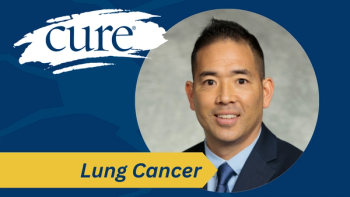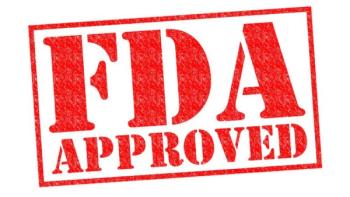
Closing Cancer Care Gaps With Patient-Focused, Cost-Effective Support
Key Takeaways
- The CARE Clinic provides centralized management of urgent symptoms and treatment-related toxicities, serving as an alternative to emergency departments for cancer patients.
- Programs within the clinic expedite cancer diagnoses and offer rapid access to palliative care, addressing gaps in oncology care.
The CARE Clinic at University of Colorado Hospital was developed to close treatment gaps caused by disparities in cancer care, as explained by Kasey Bowden.
Delays, interruptions, and barriers to timely treatment can be caused by disparities in cancer care and can often leave significant unmet needs in community oncology. The CARE Clinic at University of Colorado Hospital was developed to close these gaps by providing a centralized, patient-focused space where urgent symptoms, treatment-related toxicities, and complications are managed by advanced practice providers.
In addition to managing side effects, the clinic also includes programs that expedite cancer diagnoses and provide rapid access to palliative care when needed, according to Kasey Bowden, a nurse practitioner at University of Colorado Hospital (UCH), in Denver, where she also serves as the medical director of the UCHealth Clinical Assessment and Rapid Evaluation (CARE) Clinic on the Anschutz Medical Campus.
“What sparked the creation and growth of all these elements is the common thread of trying to identify gaps in the system of oncology care and figuring out a patient-centered, holistic way to fill some of those gaps,” Bowden explained in an interview with CURE.
In the interview, Bowden sat down to discuss the development of the CARE clinic and how it aims to help patients who are receiving cancer treatment, as well as help patients get diagnosed to start treatment more quickly.
Additionally, she is the associate division head of the CU Division of Hospital Medicine, director of Value-Based Care for the CU Division of Oncology, and associate professor of Medicine–Hospital Medicine and assistant professor at the University of Colorado School of Medicine.
CURE: Can you describe what the CARE Clinic is and how it helps patients who are actively undergoing cancer treatment?
Bowden: The CARE Clinic has a few different elements, but at its core, the CARE Clinic serves as a place for advanced symptom management and urgent care for patients with solid tumor malignancies. It functions as an alternative to an emergency department for patients undergoing anticancer treatment, and also as a place where patients can receive more intensive treatment for the toxicities and side effects that occur with anticancer treatment. That's kind of the bread and butter of what the CARE Clinic is.
Then we have two other sub-clinics stemming from the CARE Clinic. One of these is the diagnostic clinic, which is for patients with suspected cancer. For instance, if a patient goes to their primary care provider complaining of shortness of breath for six months, and then a chest X-ray reveals a mass, they can be referred to the CARE Clinic. We will then take over to ensure they receive a prompt and thorough workup for a formal diagnosis, and then get them to the right treatment team as quickly as possible.
The third component is our Urgent Palliative CARE Clinic. This is for patients with advanced cancers who have been undergoing anticancer treatment and experience a sudden turn in their clinical trajectory, struggling more, but are not yet established with palliative care. Sometimes, their outpatient wait time can be months, but these patients often don't have months to have these discussions with palliative care. So, we also have an Urgent Palliative CARE Clinic where patients, as I said, who have an acute change in their clinical status, can see a palliative care provider within one week.
What inspired the creation of the clinic, and how does it help patients get diagnosed to start treatment more quickly?
What sparked the creation and growth of all these elements is the common thread of trying to identify gaps in the system of oncology care and figuring out a patient-centered, holistic way to fill some of those gaps. This is similar to how the CARE Clinic helps address the toxicities and side effects that patients experience during cancer treatment. Patients are living much longer than ever before, which is wonderful, but cancer treatment involves many symptoms and side effects, such as pain, nausea, and fatigue. We can help address these so that patients not only live longer but also, hopefully, live better.
The Diagnostic Clinic emerged from a similar realization. We understood that the cancer treatment system primarily focuses on post-diagnosis care. However, the pre-diagnosis system, such as primary care providers who have traditionally been responsible for obtaining the workup for a cancer diagnosis, often aren't equipped to get all the necessary information to formalize and finalize a diagnosis, especially in a large academic medical center, let alone do so quickly.
Second, and probably even more importantly, insurance companies don't actually see a suspected cancer diagnosis as urgent or emergent. So, even when appropriate tests, images, and biopsies are ordered, there are often lags — delays of weeks, sometimes even months — before these things get scheduled because they're not flagged as urgent or emergent. We realized that you need a dedicated team who can create processes so that patients going through this really scary time not only get answers but also get in with the right provider to start treatment or receive care quickly. We saw that this was not happening within our system, and we needed to create our own team to do this for patients; that's where the Diagnostic Clinic came from.
Many patients experience real-life obstacles that can delay or disrupt their care. These factors contribute to broader disparities in cancer treatment. How does the CARE Clinic work to address these types of barriers for patients?
A core goal of our work is to address the disparities faced by patients receiving cancer care, particularly those with advanced cancer. As mentioned, patients are living longer, but diagnoses are often still terminal, and the treatment journey involves frequent trips to a cancer center for labs, imaging, radiation, surgery, chemotherapy, and oncology visits. This creates a significant burden for patients and their families. When patients are experiencing all of this and feeling terribly throughout the process, we start to question if we're truly serving them. We want patients to live and to live well.
Therefore, our goal in the CARE Clinic is to consolidate as many services that fall outside a primary oncologist, surgeon, or radiation oncologist's direct purview. We aim to house them in one supportive care space that is patient-centered and cost-effective. This space can provide for all those other needs beyond the "bread and butter" or core of cancer care, allowing us to address all the additional needs that arise with anti-cancer treatment. That's the big-picture "pipe dream": can we create a system where many needs can be addressed in one place? We're currently working to identify the major problems and establish this dedicated space, this home, to help address these issues for patients in a cost-effective way.
Our clinic is run by advanced practice providers, including nurse practitioners and physician assistants, all trained in both oncology and internal medicine. This dual expertise means we not only understand the patient's anti-cancer treatment but also have the background and skills to address the symptoms, side effects, and complications that can come with it. Whether it's immunotherapy toxicities, which can mimic an autoimmune disorder, or infections that patients on chemotherapy might get, our APPs are trained to handle these. The cost of being seen in a place like the clinic is drastically less than going to the emergency department. It's also a more patient-centered environment because we understand the patient's background and work closely with their oncology team.
Our goal in value-based care is truly about achieving both better outcomes and lower costs. A model like the CARE Clinic exemplifies this. Patients receive better care within the clinic, and it's at a drastically lower cost than an emergency room visit, making it a win-win situation. This is our small piece of a very large puzzle as we strive to address some of the disparities inherent in cancer care.
Reference
- “CARE (Clinical Assessment and Rapid Evaluation) Clinic,” by University of Colorado Anschutz Medical Campus. Accessed July 21, 2025.
For more news on cancer updates, research and education, don’t forget to





